Jellyfish
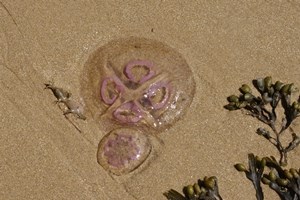 Moon Jellyfish
Moon Jellyfish
 Barrel Jellyfish
Barrel Jellyfish
 Blue Jellyfish
Blue Jellyfish
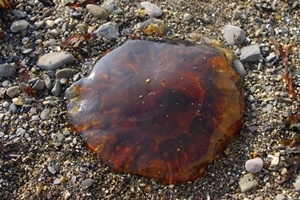 Lion's Mane Jellyfish
Lion's Mane Jellyfish
 Compass Jellyfish
Compass Jellyfish
 Crystal Jellyfish
Crystal Jellyfish
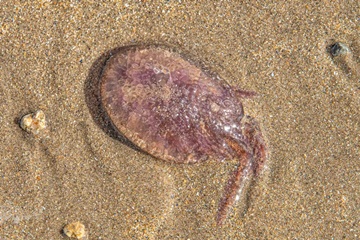 Mauve Stinger
Mauve Stinger
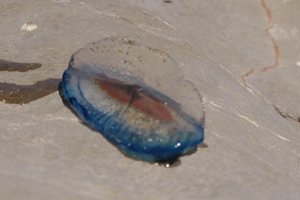 By-the-wind Sailor
By-the-wind Sailor
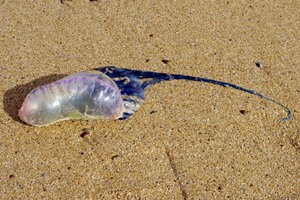 Portuguese Man o' war
Portuguese Man o' war
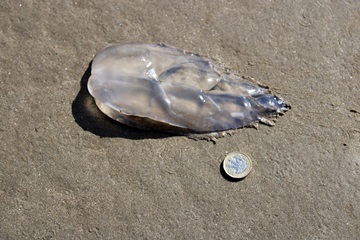 Melon Comb Jelly
Melon Comb Jelly
 Sea Gooseberry
Sea Gooseberry

Jellyfish are commonly seen washed up on the beaches during the summer months, but fortunately in Wales, most are relatively harmless and stings can be easily treated. The sting is caused by specialized cells called nematocysts, which are triggered by contact, and inject venom into the victim. If stung, the current advice is to remove any remaining stinging cells with tweezers, or gently scrape the affected area with a straight edge (e.g. a credit card). It is now thought that the old treatment of applying vinegar (even if you had some) is ineffective. In the unlikely event of suffering an allergic reaction, get to hospital quickly!
Jellyfish typically have a lifespan of just a few months, and are made up of around 90% water. Although they can propel themselves in the water, they are largely at the mercy of ocean currents, and are frequently washed up on beaches.
 Moon Jellyfish
Moon Jellyfish
 Barrel Jellyfish
Barrel Jellyfish
 Blue Jellyfish
Blue Jellyfish
 Lion's Mane Jellyfish
Lion's Mane Jellyfish
 Compass Jellyfish
Compass Jellyfish
 Crystal Jellyfish
Crystal Jellyfish
 Mauve Stinger
Mauve Stinger
 By-the-wind Sailor
By-the-wind Sailor
 Portuguese Man o' war
Portuguese Man o' war
 Melon Comb Jelly
Melon Comb Jelly
 Sea Gooseberry
Sea Gooseberry